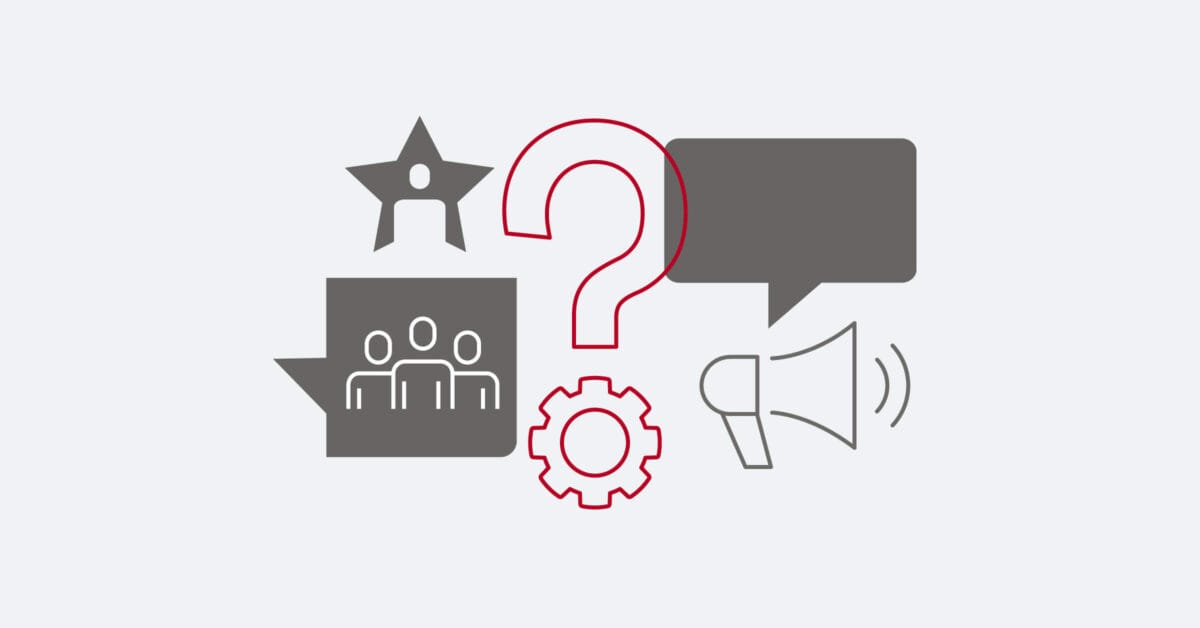Blog
4 Ways to Overcome Change Management Communication Challenges
|

Blog
4 Ways to Overcome Change Management Communication Challenges|

Visible leadership, effective project management and strategic communication are essential to effectively driving change in an organization. Communication advances change initiatives by engaging and empowering employees. It delivers consistent and clear messages that fuel employee understanding and commitment to change.
Communication is vital to change, but it’s challenging because communicators are addressing both large audiences and individuals who are already under stress. Here are the four key change management communication challenges that organizations must overcome to achieve effective and sustained change.
1. Communicating why change is necessary
The need for change is often so clear to change leaders (executives or the team that’s championing it) they forget the rest of the organization may not understand the change. It’s crucial for change leaders to use change management communication to help employees understand why the change is necessary.
Successful change requires leaders to educate employees on what’s happening at a macro level within their industries, why the change is necessary for the organization’s future success, and what the implications are in the absence of change. Research shows that employees prefer to hear the “why” of change from an executive champion, one of the few times employees prefer to hear from the top rather than their direct supervisor.
Click here for additional tips on how to manage organizational change.
2. Keeping change sponsors involved from start to end
Keeping change management sponsors engaged from beginning to completion is a common change management communication challenge. These future-facing, visionary leaders may believe that once they’ve done the research, identified the need for change and empowered their teams, they can leave it to others to implement and move on to the next priority.
The reality is that employees need to hear from change sponsors at the very beginning of the initiative and throughout the entire change arc. Change initiatives feel inconsistent without an ongoing presence from change sponsors. Change management communication plans should pair sponsors with dedicated communication resources who help them continue to participate and be visible and present. Ongoing involvement from change sponsors creates consistency and builds trust, both vital elements of successful change management.
3. Putting people – not process – first
Meaningful change management requires employees to change their behavior, and that poses another change management communication challenge. Behavior change won’t happen unless the organization creates an emotional connection between the why, what and so what. Employees want to understand what will be different as a result of the change — for themselves, their colleagues, customers and the company. Leaders can get caught in the trap of considering change management communication to be a process or an item to check off the list. They may email information, discuss it at an all-staff meeting, add it to a newsletter and assume their job is complete.
Approaching change management communication this way will be ineffective. Change sponsors and leaders need to understand the emotional and psychological needs of employees. They need to prepare for emotions like resistance, denial and fading enthusiasm. Change management requires employees to develop new habits that change behavior. Change management communication requires a consistent, employee-centered approach that addresses the emotional aspects of change and includes regular checks-in with employees.
4. Leveraging the right communication channels and spokespeople
Successful change management communication uses a variety of channels to deliver consistent messages throughout the entire change process. An effective change management communication plan matches the tool to the message. Too often, organizations rely on one-way communication methods like email and newsletters. These channels are effective at communicating follow-up details, but not when announcing a significant change.
Organizations must carefully choose the communication channel and spokesperson when the change affects things like employees’ roles, how they do their jobs, their compensation or the executive team. Research shows that employees prefer to hear about significant changes from a senior leader like the CEO, COO or CFO through a face-to-face channel like a town hall meeting (or video, if necessary).
Organizations that use a limited number of communication channels and rely too heavily on one-way channels run the risk of incorrectly assuming employees received and internalized the messages. These one-way, top-down approaches also don’t consider and accommodate the emotional impact of change messages, which creates an environment ripe for employee resistance.
Change is difficult but necessary for the future success of any organization. Change initiatives will fall flat without successful change management communication. Overcoming change management communication challenges requires articulation on why change is needed and involves leaders from start to finish. It acknowledges the emotions involved in change and addresses these emotions by delivering messages to employees through channels that match the significance of the message.
Nicki is a positively brilliant strategist with a knack for inspiring clients and teams to think and act in powerful ways. Her favorite question is “What if?” Her ability to imagine what’s possible creates contagious enthusiasm that moves businesses forward. Nicki also is a ProSci-certified change management leader with deep experience applying research-based methods to drive measurable business results.


